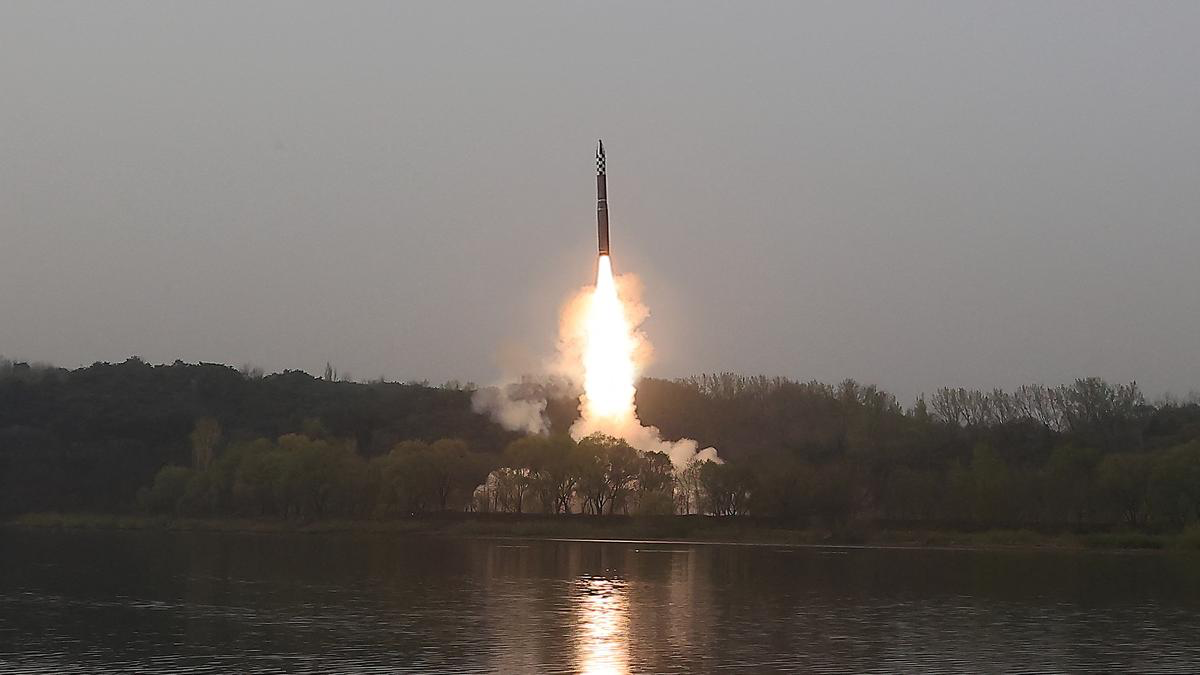Description

Disclaimer: Copyright infringement not intended.
Context
- Increase in China's nuclear arsenal from 350 warheads in January 2022 to 410 in January 2023, with expectations of further growth.
Details
China's Nuclear Arsenal Expansion:
- China's nuclear arsenal increased from 350 warheads in January 2022 to 410 in January 2023.
- SIPRI estimates suggest that China's arsenal is expected to continue growing.
- There is a possibility that China could have as many intercontinental ballistic missiles (ICBMs) as the U.S. or Russia by the end of the decade.
India's Nuclear Arsenal Expansion:
- India's nuclear arsenal grew from 160 warheads in 2022 to 164 in 2023.
- India appears to be placing growing emphasis on longer-range weapons, including those capable of reaching targets across China.
- India is in the process of upgrading its ballistic missiles, including the development of a submarine-launched intermediate-range ballistic missile and the induction of the 'Agni Prime' ballistic missile.
Pakistan's Nuclear Arsenal Expansion:
- Pakistan's nuclear arsenal increased from 165 warheads in 2022 to 170 in 2023.
- While Pakistan remains the main focus of India's nuclear deterrent, India's emphasis is shifting towards longer-range weapons.
Global Nuclear Arsenal Modernization:
- The nine nuclear-armed states, including the United States, Russia, the United Kingdom, France, China, India, Pakistan, North Korea, and Israel, continue to modernize their nuclear arsenals.
- Several countries deployed new nuclear-armed or nuclear-capable weapon systems in 2022.
Global Inventory and Distribution of Warheads:
- In January 2023, the total global inventory of estimated warheads reached 12,512.
- Approximately 9,576 warheads were in military stockpiles for potential use, marking an increase of 86 compared to January 2022.
- Russia and the U.S. together possess nearly 90% of all nuclear weapons.
Impact of Ukraine Conflict on Arms Control:
- In the wake of the war in Ukraine, the U.S. suspended its bilateral strategic stability dialogue with Russia.
- Russia announced its suspension of participation in the 2010 Treaty on Measures for the Further Reduction and Limitation of Strategic Offensive Arms (New START).
- Talks about a follow-on treaty to New START, which expires in 2026, were also suspended.
- However, as of January 2023, both countries' deployed strategic nuclear forces remained within the New START limits.

Background of Arms Race
Cold War Origins:
- The Cold War, which lasted from the late 1940s to the early 1990s, was a period of intense rivalry and ideological conflict between the United States and the Soviet Union (now Russia).
- The arms race between the two superpowers defined much of the Cold War era, with both sides developing and stockpiling nuclear weapons and advanced military technologies.
China's Emergence:
- China, under the leadership of Mao Zedong, initially aligned itself with the Soviet Union during the early years of the Cold War.
- However, ideological and political differences between China and the Soviet Union led to a split, known as the Sino-Soviet split, in the late 1950s, shifting China's alignment.
Nuclear Weapons Development:
- The United States and the Soviet Union engaged in a race to develop and improve nuclear weapons capabilities, resulting in the production of thousands of warheads.
- China, recognizing the strategic importance of nuclear weapons, conducted its first nuclear test in 1964 and became the world's fifth nuclear-armed state.
Modern Arms Race:
- Following the end of the Cold War, the United States remained the world's preeminent military power, while Russia sought to maintain its influence and capabilities.
- China, experiencing rapid economic growth and military modernization, emerged as a major global player, challenging the dominance of the United States.
Technological Advancements:
- Advancements in military technologies, such as missile defense systems, hypersonic weapons, cyber warfare capabilities, and space-based assets, have become key areas of competition.
- Each country seeks to develop and deploy cutting-edge military technologies to maintain their strategic advantage and deter potential adversaries.
Regional Power Struggles:
- The arms race is not limited to nuclear weapons but extends to conventional military capabilities as well.
- Competing interests in regions such as the South China Sea, Eastern Europe, and the Middle East have led to a buildup of conventional forces and increased tensions.
Strategic Considerations:
- Each country's military buildup and modernization efforts are driven by its national security interests, regional influence, and the desire to protect and project power globally.
- Perceptions of threat, alliance dynamics, and the pursuit of strategic deterrence shape their arms race strategies.
|
PRACTICE QUESTION
Q) Examine the dynamics of the arms race between China and either the United States or Russia, and its implications for global geopolitics. Analyze the key factors driving this arms race, including military advancements and strategic interests. (250 words)
|

https://www.thehindu.com/news/national/china-could-potentially-have-as-many-icbms-as-us-or-russia-by-turn-of-decade-sipri/article66961196.ece














